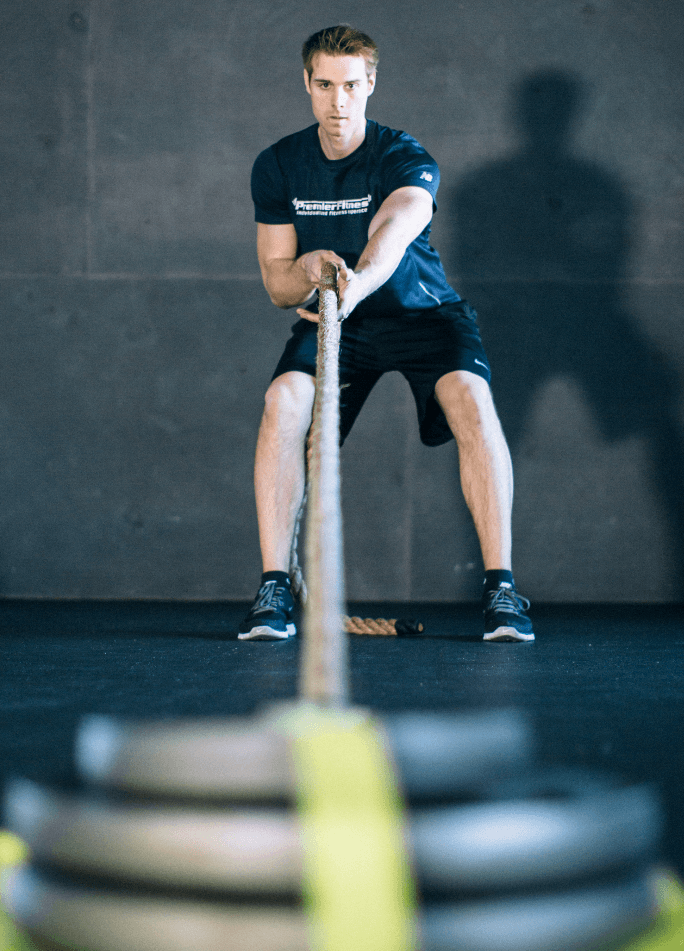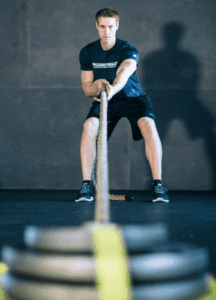Sled training is an excellent accessory exercise for concentric and strength training endeavors.
When it comes to isotonic contractions there are two types of muscle actions: concentric and eccentric training. Eccentric training is where the good muscular damage occurs but has also been shown to cause muscle soreness, which takes longer for the body to recover between workouts. (Think of any traditional exercise, picture the lowering phase of the lift.) Although eccentric training should always be a major part of your training program, implementing concentric only work could be a real game changer for maximizing your workouts. Concentric training allows for more volume and greater recovery between your muscle groups while still making performance gains.
Sleds are safe to use
Sled training is 100% concentric and can be added to your programs to improve strength, force, acceleration, fat loss, and overall conditioning. Another bonus is that when you train clients with injuries and/or limitations, having them train with a sled is actually a safe and easy to method teach. If a client isn’t able to run due to low back, knee, or other injuries they can still push a sled without any problems.
Due to simple movement patterns (unlike Olympic or power movements require), most people should have no problem training with sleds; if you can move pain free than you can push, pull, or drag a sled. Always a good idea to learn proper form from an experienced personal trainer before attempting to have clients do any exercise to maximize safety and proper form for greater results.
Do you have a client with bad knees that can’t squat? Instead of having that client perform leg extensions on a machine which causes shear force to the patellar tendon, try sled pulling. Sled pulling will achieve the same results as a series of leg extensions while engaging the upper back by holding on to the handles.
More Variety to your workout programs
Interested in an alternative to the leg press? Look no further then sled pushes. Some may call this a moving leg press or unilateral leg press. You can go heavy with the weight to incorporate full body strength. This will work the glutes, the entire posterior chain, engage the core while the base support of the sled changes with each push.
The variety of exercises are nearly endless and most of the traditional exercises such as rows, chest presses, face pulls, bicep curls, tricep extensions, and reverse flys can be duplicated using a sled. Wanting to improve your client’s deadlift without overtraining? Use the sled for pull throughs. Looking to build up back musculature? Completing sled rows will result in a real “pump.”
Train For Size, Strength, or Muscular Endurance
Depending on your programing aspirations, this type of training can be used for strength, size, or endurance by varying the weight on the sled and the distance traveled. As with traditional exercises, larger muscle groups involved in sled movements such as rows and pushes will allow for loading up more weight versus smaller muscle groups like high pulls or bicep curls. Attaching a suspension trainer to the sled will allow you to do such exercises.
More Efficient Workouts
You wont need to spend a lot of time per workouts using sleds. 5 to 10 minutes should be more than enough time due to how tiring it is to keep moving. For that reason alone, unless training for explosiveness or acceleration, program sled work at the end or towards the end of your workouts. It’s where I say “strength meets conditioning.”
Types of Sleds
There are numerous types of sleds. Some vary from a traditional prowler sled with a bottom frame that holds weight with poles and can be used on turf or concrete to a vinyl portable mini sled that can be used on multiple surfaces such as grass and rubber. The pics below are of a vinyl sled on a rubber gym surface.
Sled Exercises In Action
Here are some of my favorite sled exercises and instructions on how to perform each correctly:
Take It To The Next Level
Incorporating sled training in your programs could be the missing link when training clients. You can add volume, variety, and conditioning when other exercise modalities may be limited. Be prepared though, sled training is not easy but when used correctly can help get your clients to the next level.




